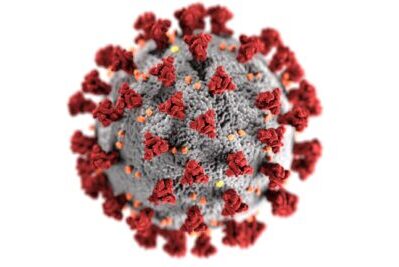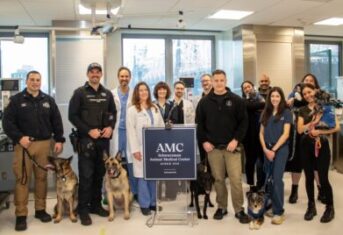First Dog Diagnosed with SARS-CoV-2 Dies from Lymphoma: A Veterinarian’s Perspective

First Dog Diagnosed with SARS-CoV-2 Dies from Lymphoma: A Veterinarian’s Perspective
A recent article in National Geographic profiles Buddy, the first dog in the United States to be diagnosed with SARS-CoV-2, who passed away from lymphoma on July 11. As a veterinary oncologist, I know firsthand the anguish that comes with the loss of a beloved pet to cancer. Pets are essential to our well-being, and this is an especially tough time to lose a pet. My sympathies to the Mahoney family of Staten Island.
As a veterinarian, I have followed the coronavirus pandemic with great interest and feel obligated to expand on some medical information discussed in the article.
A note on terminology: COVID-19 is the name of the disease state in humans. SARS-CoV-2 is the name of the virus that causes COVID-19 and the name of the disease state in animals.
The One Health Approach to SARS-CoV-2 and COVID-19
Veterinarians play an important role in society by protecting human health. We do that by recognizing diseases in animals that can be transmitted to humans. These are called zoonotic diseases, and rabies is a common example of such a disease. Veterinarians collaborate with animal, human and environmental health experts at the federal, state and local level to identify and contain zoonotic diseases. The goal of this transdisciplinary or “One Health” approach is to ensure optimal health outcomes for all by considering multiple aspects of a disease outbreak.
In New York State, there is a long list of reportable animal diseases and a similar one in New York City, where SARS-CoV-2 is specifically listed as reportable. This reporting structure is how the United States Department of Agriculture (USDA) and the World Organization for Animal Health (OIE) get their information on SARS-CoV-2 in animals and report to the public. If the veterinarian doesn’t report the disease, the system has a backup plan and laboratories issuing a positive test result for a reportable disease must alert public health officials. The National Geographic article implies a lack of communication between these governing bodies, but in Buddy’s case a One Health team did indeed collaborate to investigate his infection and report it to both the USDA and OIE per standard reporting protocol.
SARS-CoV-2 Testing in Animals Largely Takes Place Behind the Scenes
In the United States there are currently 22 confirmed cases of SARS-CoV-2 in pets. Most of those pets have had multiple different types of tests to confirm their infections. However, the USDA reports only positive cases and doesn’t report the number of tests performed, making it hard to extrapolate an “infection rate” in pets similar to the widely reported infection rate in humans. I know veterinary researchers are surveilling pets from homes with COVID-19, and I expect there will be publications of this data in the coming months that will shed light on the infection rate in pets. Veterinary reference laboratories have also been surveilling samples submitted for routine respiratory illness testing. Tests performed by Idexx Laboratories and Antech Diagnostics number in the thousands and only two positive cats have been identified thorough this route of testing, suggesting the infection rate is low in companion animals.
More Information is Needed
The pandemic has upended the entire veterinary medicine profession. In the National Geographic article, Buddy’s family says they wish a necropsy (an animal autopsy) had been offered because they wanted to help veterinarians understand SARS-CoV-2 and its possible role in Buddy’s death. First, let me say thank you to every pet owner who has allowed their pet to provide a learning opportunity by consenting to a necropsy. If I had been Buddy’s veterinarian, the scientist in me would have wanted a necropsy, but the reality of veterinary practice in the COVID-19 world doesn’t always mesh with our desire for science. The article suggests more animals should be tested and more research should be done. That is certainly true, but keep in mind that veterinary research was largely shut down during the height of the pandemic and is only now reopening.
The National Geographic article also raises concern about the “consistent and narrow” narrative of SARS-CoV-2 infection in animals, implying an over-simplified interpretation of an unknown disease. However, this narrative fits exactly with the data produced to date: a low rate of infection in pets, mild clinical signs and recovery from infection with minimal treatment. Although, every veterinarian and physician knows that even typically mild diseases can become serious in some patients. Presently, SARS-CoV-2 infection in pets is rare with less than 25 cases despite thousands tested in the US. Rare diseases are hard to study and present greater medical uncertainty. So far, it appears that overall, pets are faring better than the 14 million humans worldwide affected by the coronavirus. Let’s hope it stays that way.
Remember: You can protect your pet against SARS-CoV-2 by limiting your pet’s interactions with any COVID-19-positive humans since all reported cases in dogs and cats have been associated with infected humans.

































